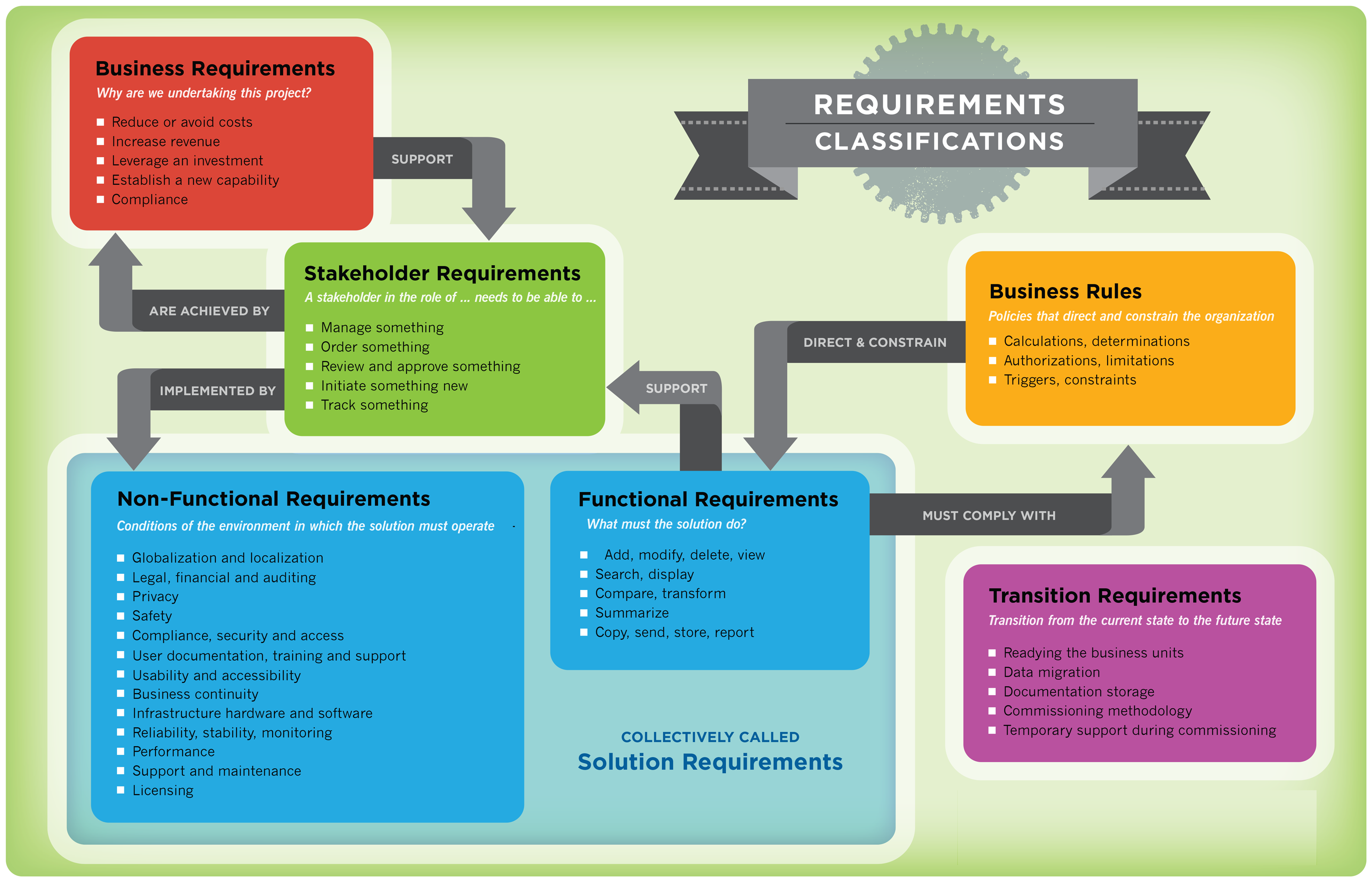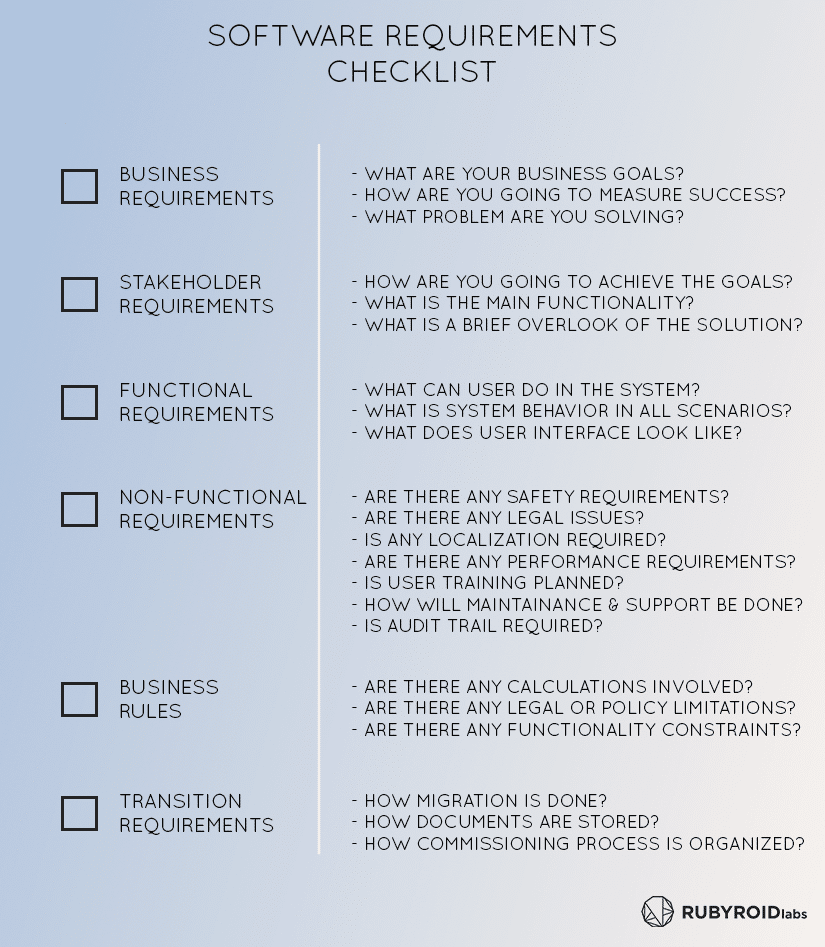Project kick-off is a heart-pounding time for both developers and Product Owner. Find out what software requirements you need to provide developers for a project success and get a handy checklist inside.
The start of a new project is a huge stress both for developers and product owners. Besides, it is kick-off phase, which to a great extent defines the future success. But how can a Product Owner figure out, whether he has all necessary requirements to start the development? And why at all should he care? Let’s find out!
Why is it important to gather all requirements?
First and foremost let’s figure out, why it is important to focus on requirements before the start of the project. There are a few reasons for that:
1. Estimates
If you have a clear picture of what you want, it will be easier for the Team to provide accurate estimates.
Estimating Development Part 1. Why Estimates Can Let You Down
This way you will know better how much development will cost as well as the approximate delivery date. By providing detailed requirements you will help yourself to plan your budget and marketing strategy right.
2. Cost optimization
It is much easier to change something on paper than in code. If you know well what is required and are able to deliver it to developers in a comprehensive way, the necessity for change requests during the development will drop dramatically. This way you won’t waste your money on unnecessary code written. Besides, this would let you postpone some “heavy”, but not top-priority features for later phases right away.
3. Planning
Doing a thorough analysis of your requirements will let you understand the future project better and as a result take more conscious decisions. It will be easier to form MVP, agree on Roadmap as well as take some cornerstone decisions regarding application structure.
Ultimate Guide to Building a Successful MVP. Part 1
Doing requirements research is like filling all blank spaces on a map before your trip. It lets you plan better and simply feel more confident about your decisions.
What types of requirements exist
Since requirements are a pretty vague thing to define, best practices here is to split them into a few groups. Let’s have a look at the scheme provided by Corporate Education Group (click on it for a bigger pic):
Now let’s have a more detailed look at each type of requirements.
1. Business Requirements
Business requirements are the starting point of your analysis. The first question you should ask yourself as a stakeholder is ‘Why am I developing this project? What aim am I trying to achieve?’
It is at the same time one of the easiest and the hardest. You should know for sure what problem you’re solving and how you are going to evaluate whether the project was successful or not. Knowing an answer to this question will let you form roadmap easier since now you will not only follow your guts but also think of how much this or that feature is bringing you closer to your goal.
At the same time it is extremely important for developers to know what aim they are trying to achieve, since this way they will not only feel more motivated but also will be able to offer you a more suitable solution.
2. Stakeholder Requirements
Stakeholder requirements go hand in hand with Business ones. They are a little bit more down to earth and in fact, are answering a question ‘How you are going to achieve your goals?’.
Answering this question is grand for starting high-level prototyping your future system and getting closer to an idea what sort of product you need. If you keep tight to the business goals you set, this will guarantee that the chosen solution will definitely solve your problem.
3. Functional Requirements
Now that you know your goals and the way you want to achieve them, it is high time to get down Solution Requirements, which can be split into Functional and Non-functional ones.
Functional requirements (as you might guess) focus on the practical aspect. In fact, here you dive into the imagined solutions and provide all the details on how you want every single piece of the application to look and behave.
Why You Should Consider Wireframing for Your Next Project
It is a huge part of work to be done, we will cover the best ways to express it in our future articles.
4. Non-functional Requirements
Non-functional requirements, though often missed out, are no less important. Here you specify all the tiny details and peculiarities of your system, which are not actual actions of a User.
For example, non-functional requirements can include performance, security, legal requirements from your side. Don’t forget to go through the list mentioned in the scheme above to make sure everything is taken care of.
5. Business Rules
Business rules are a nice addition to Solution requirements. Basically, here you specify all sorts of limits and constraints your business faces up with. This can be put forward by your company policy or legal regulations.
Besides, Business rules include all sorts of calculations and formulas your system might use. For example, if you run an online store and you have some discounts depending on the amount of order and order history, this should be included into Business rules section.
6. Transition Requirements
And finally, if you need any data migration, don’t forget to think about it beforehand, since it might influence the application architecture drastically. Besides, this section might include commissioning regulations, document storage and other details.
Business requirements checklist
As you see, gathering requirements might take a while. To make sure you didn’t miss anything out, we organized it all in a handy checklist.
Though gathering requirements is a tough work, don’t worry about it. The moment you start asking yourself all these questions, the situation will start looking much clearer. If you still feel non-confident about this, you can always ask us for help. We will help you organize all these requirements together.
Hope now you know more about requirements elicitation. In our future articles, we will cover what artifacts work best to document them. Stay tuned.





